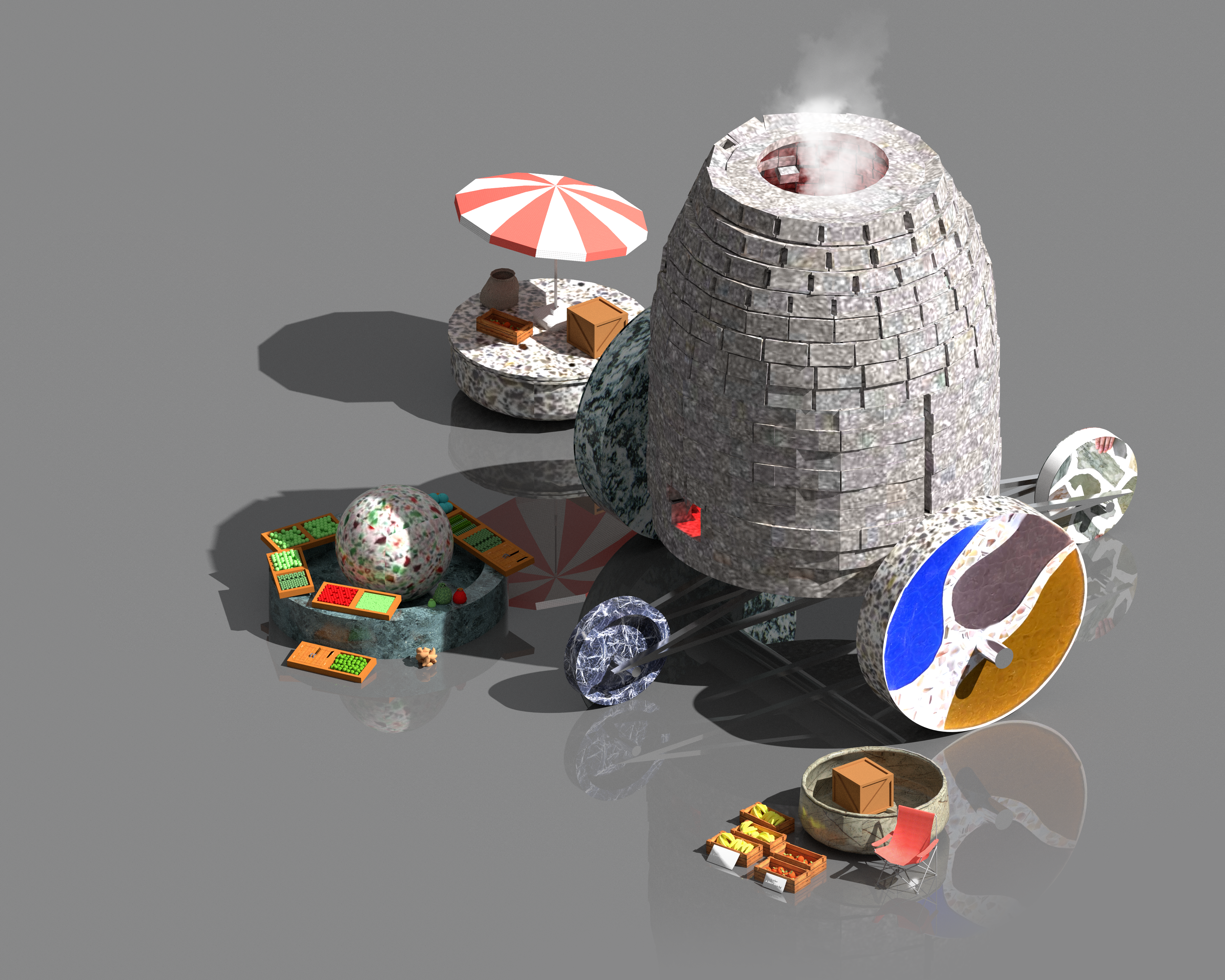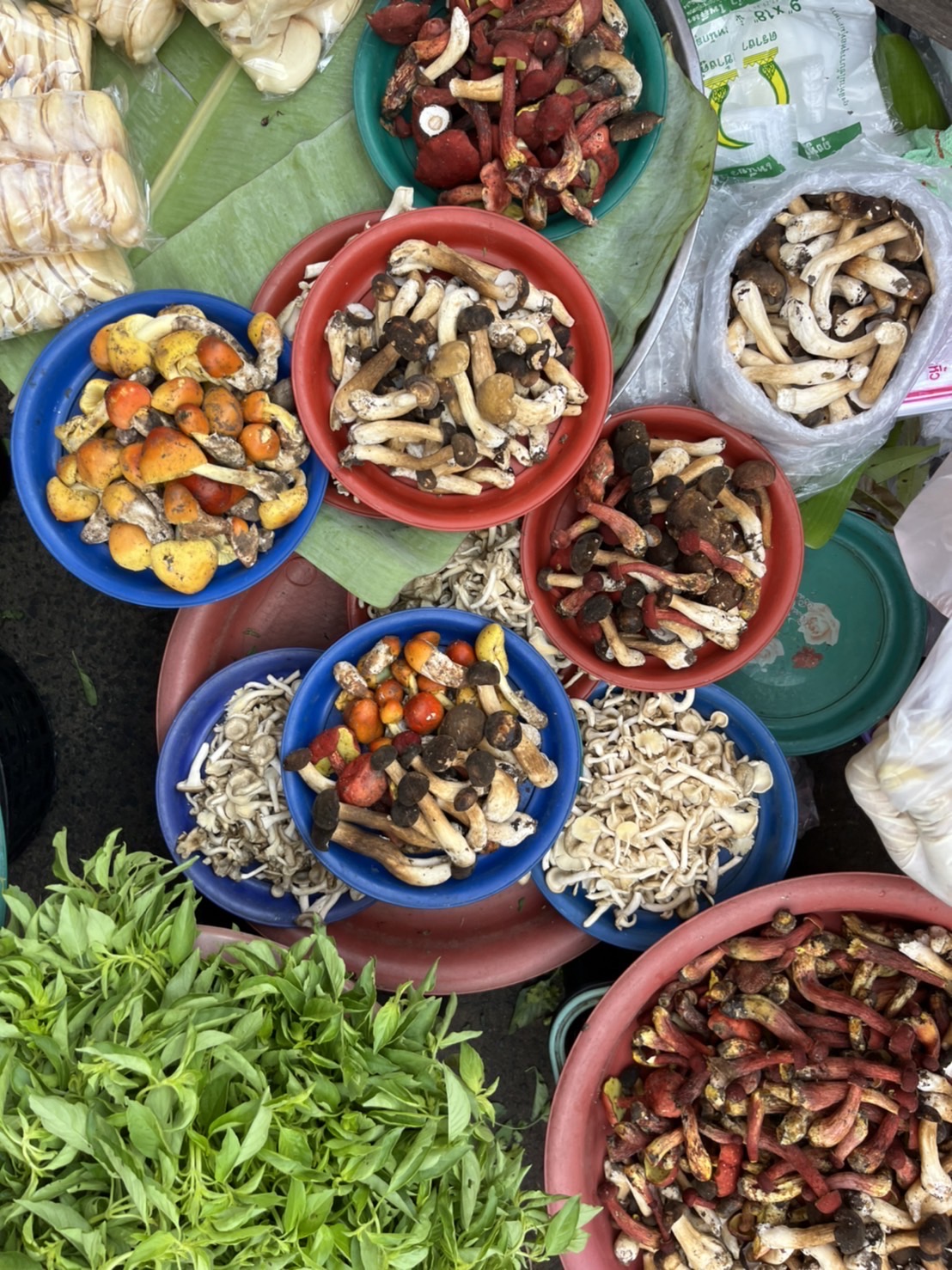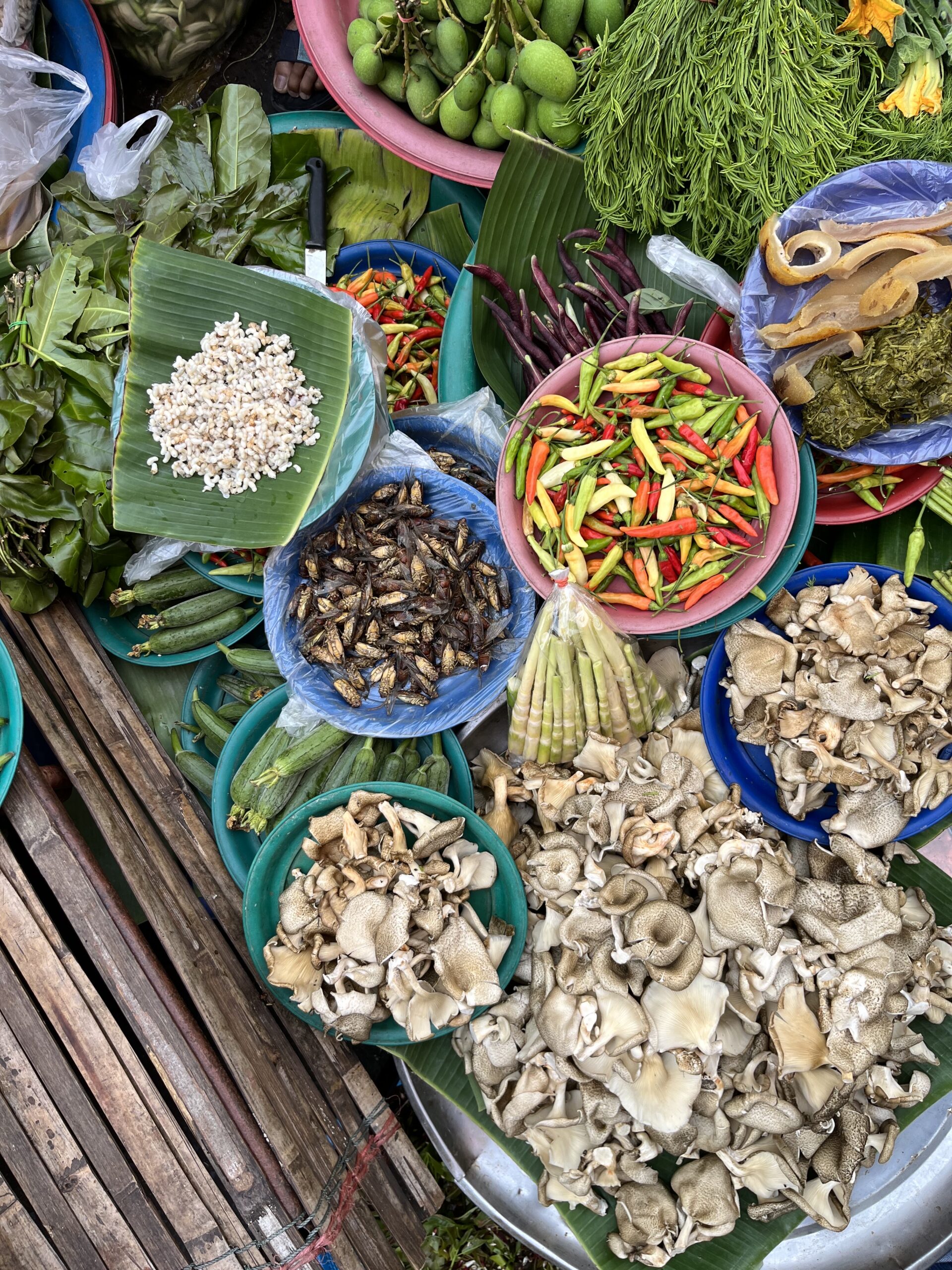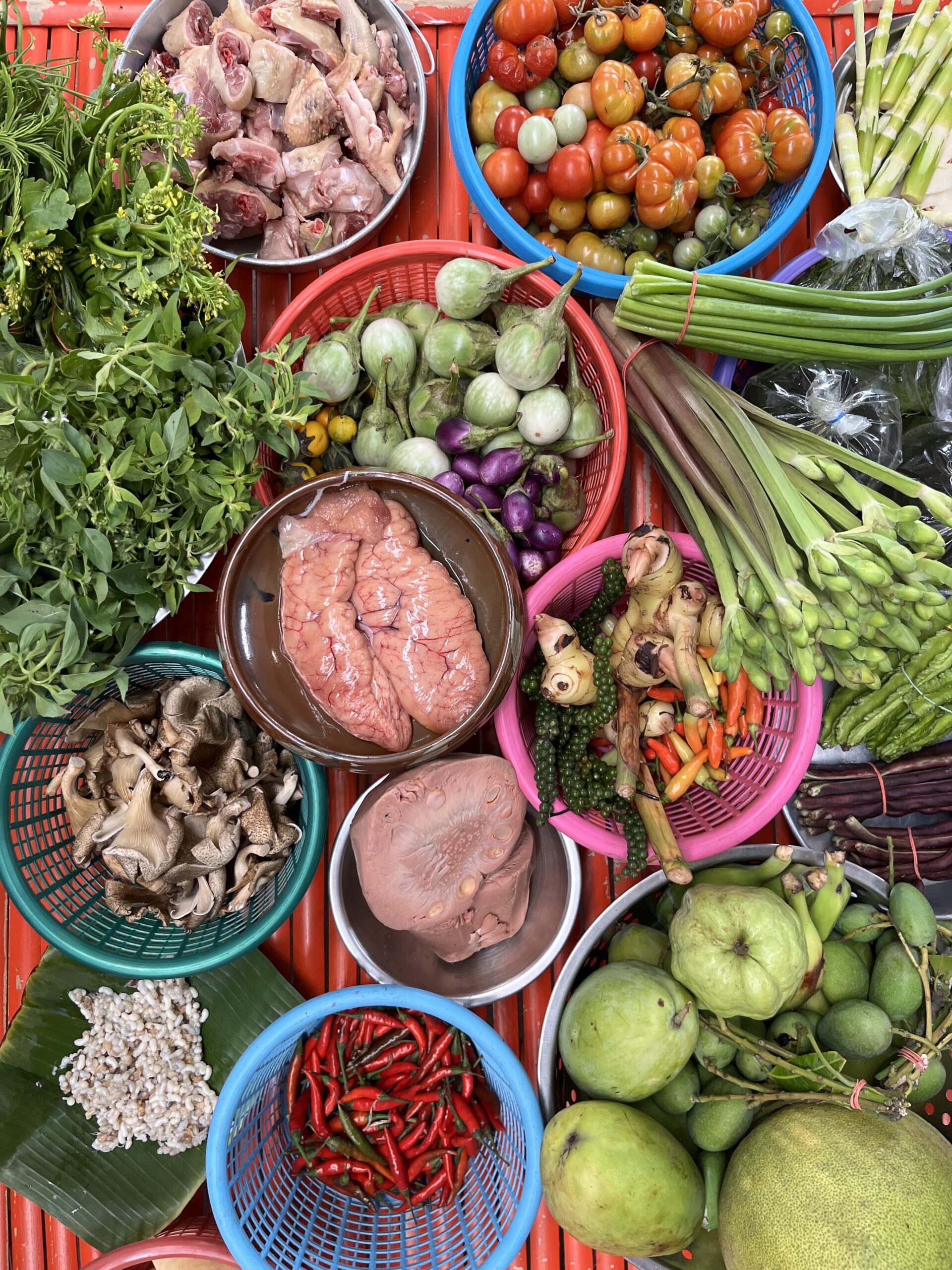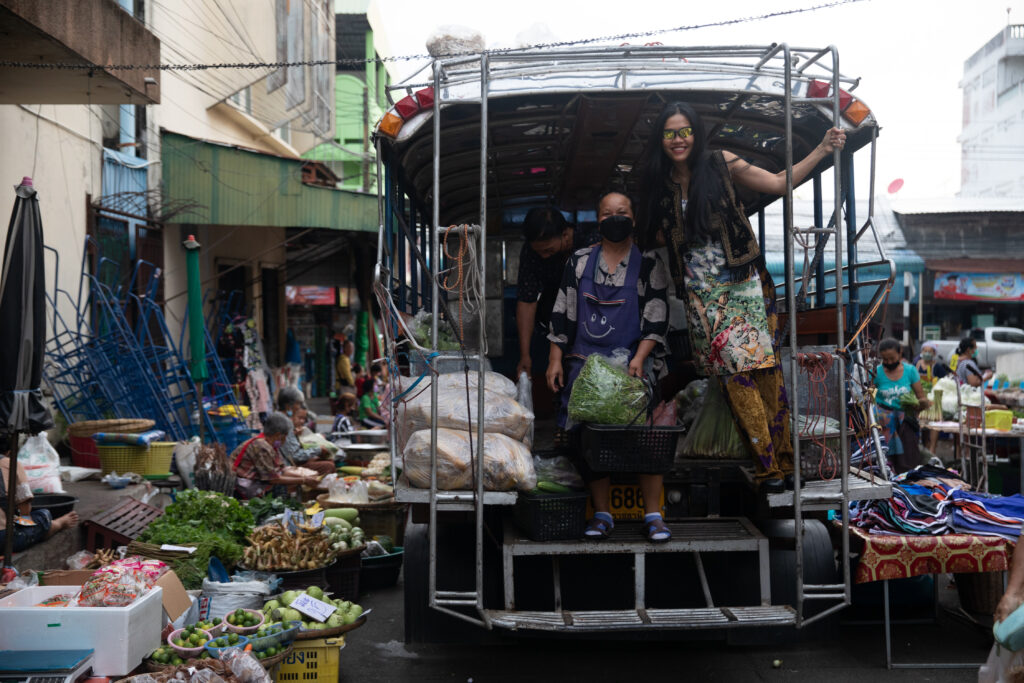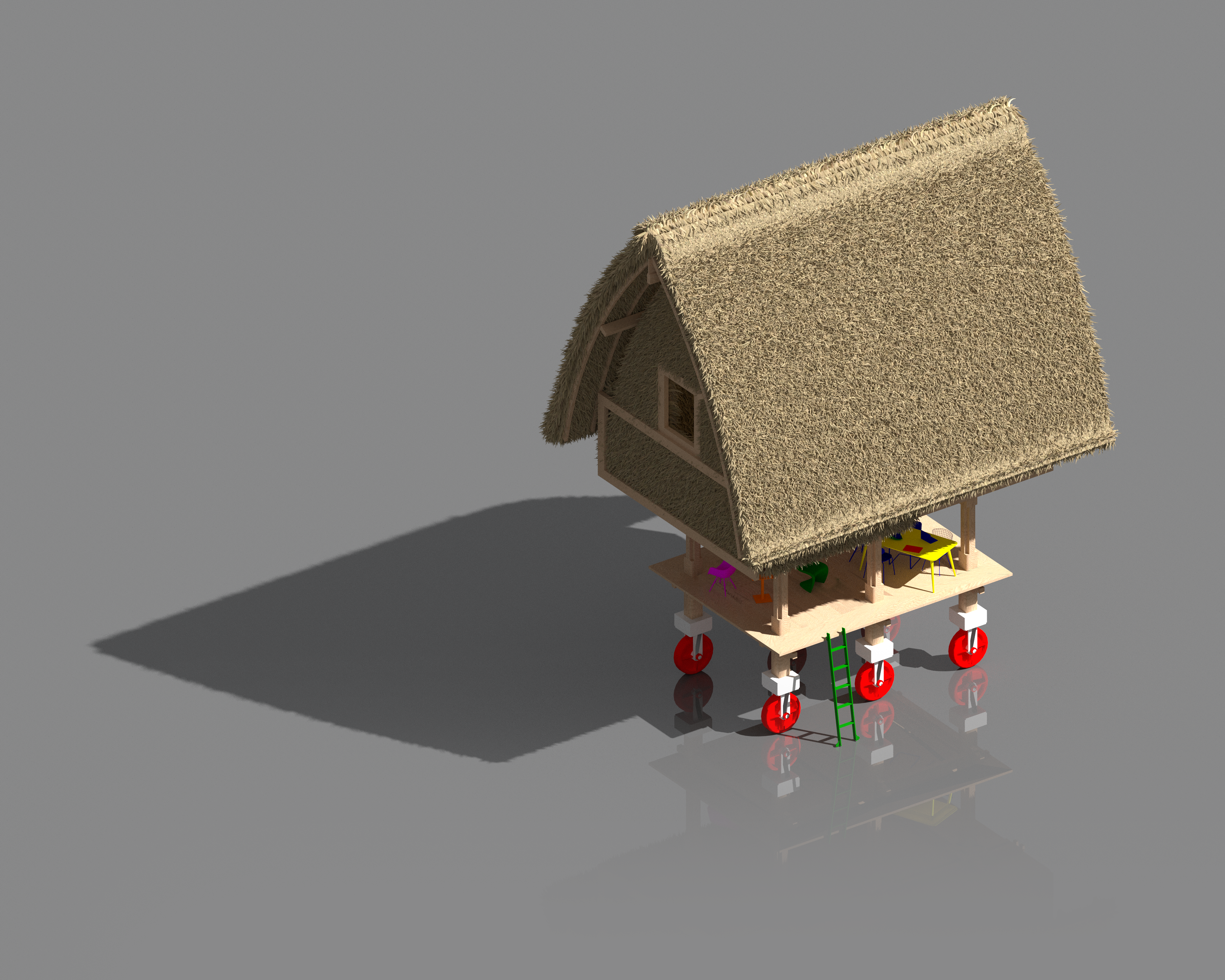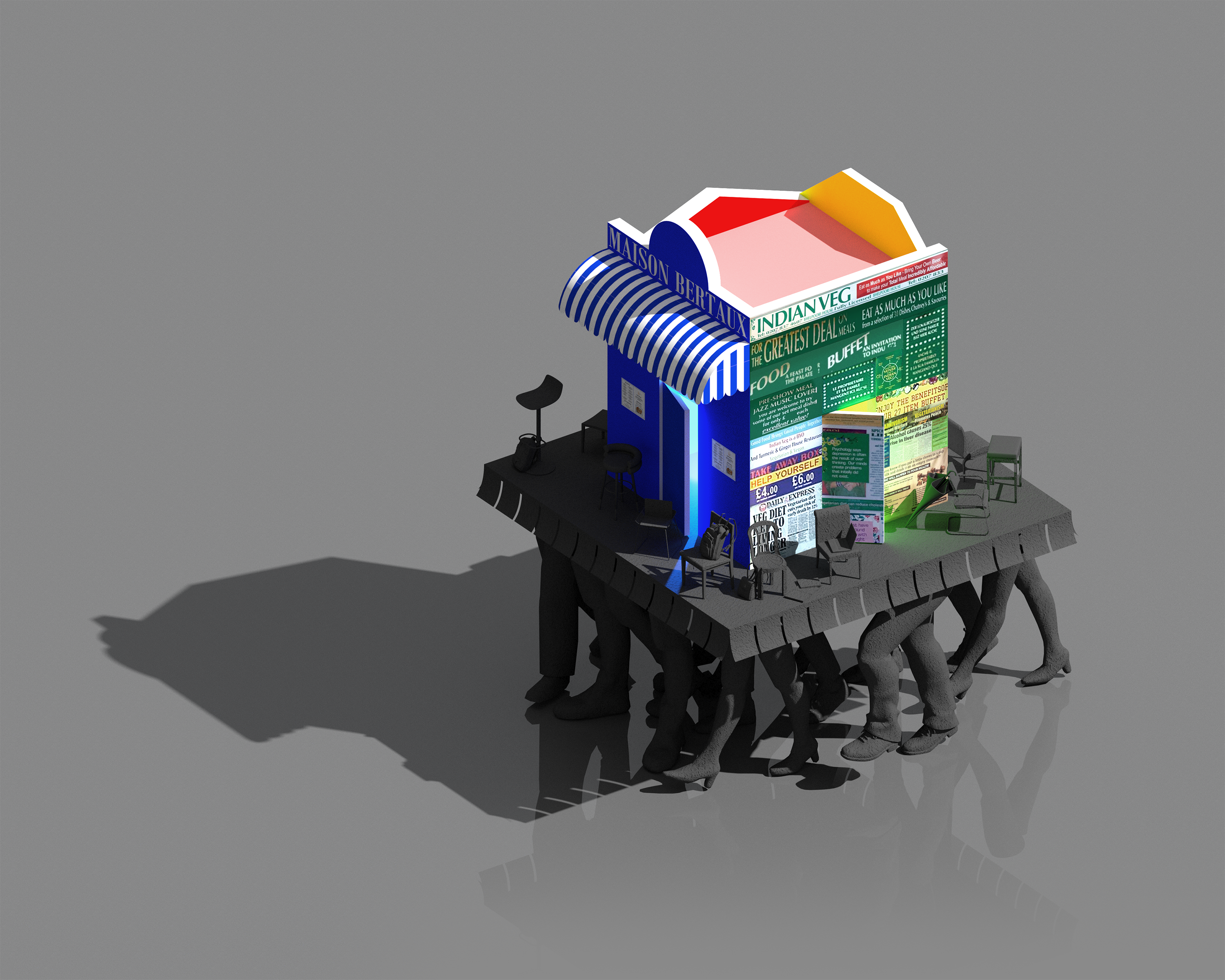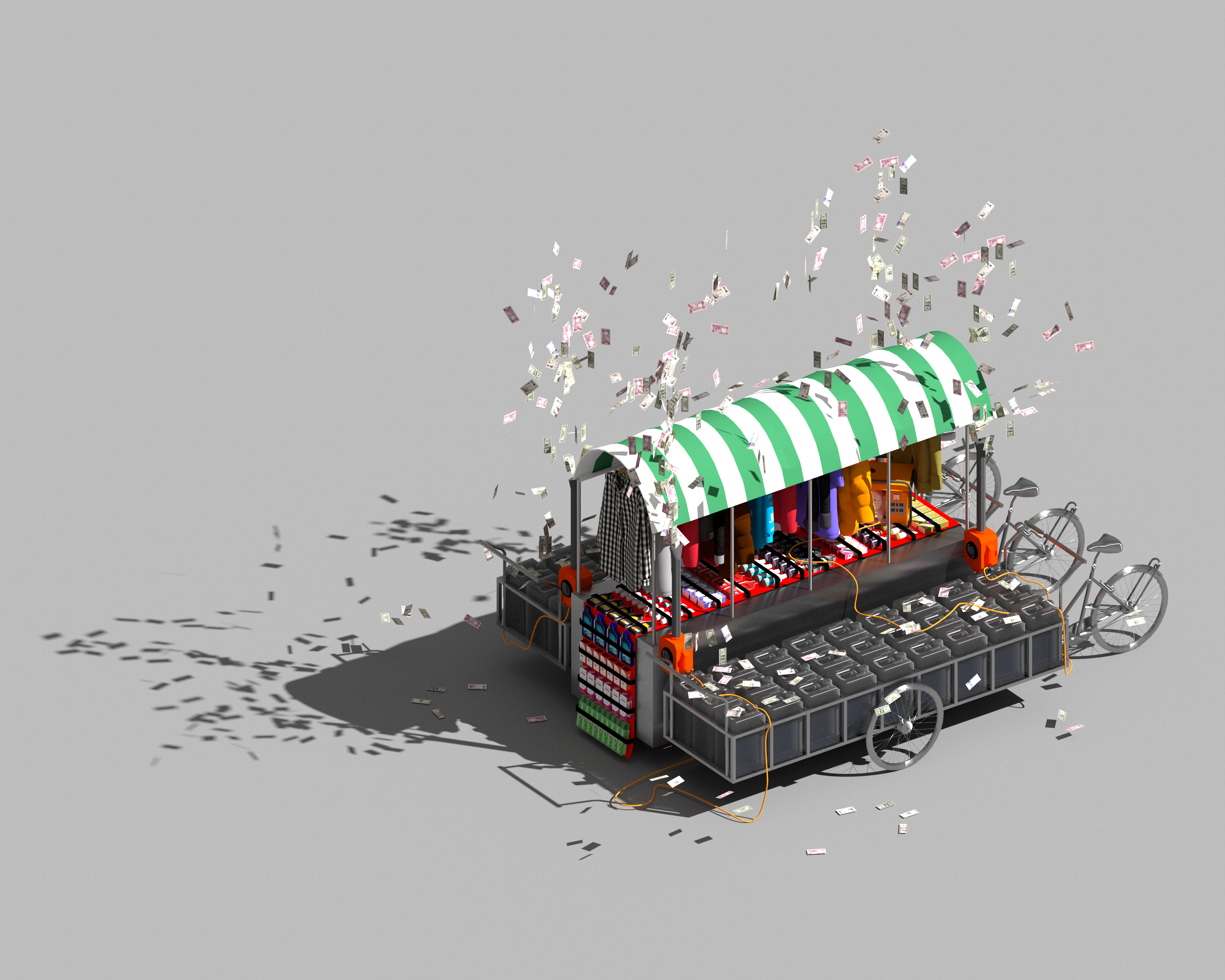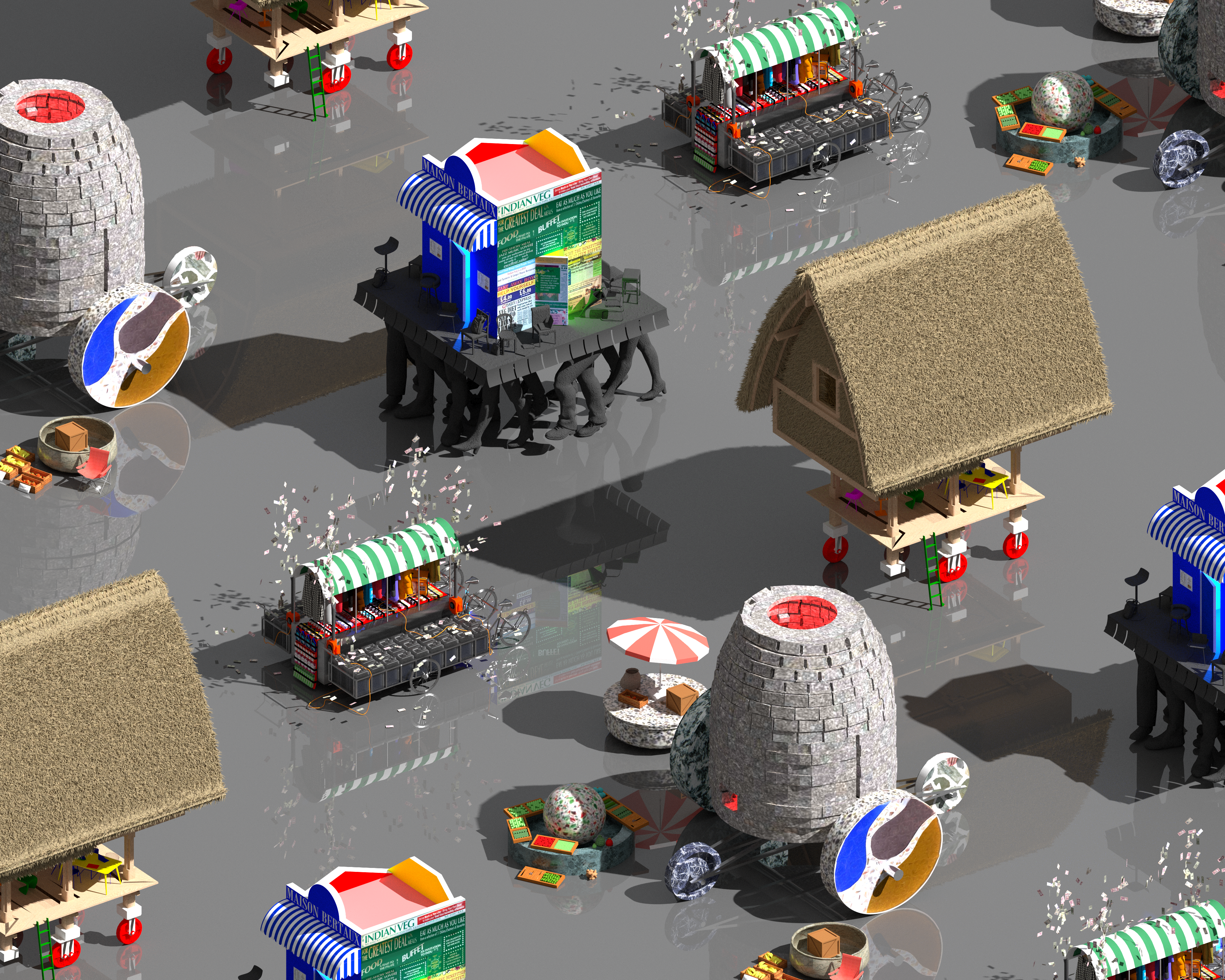This story is a part of MOLD’s series on Decentralized Design. Through this series of conversations we explore how designers, thinkers, and artists are using decentralized approaches to seed a more resilient future.
In early 2021 I relocated my furniture design studio from Brooklyn to Thailand. After spending much of the previous year questioning the supposed design ‘canon’, I hoped that stepping outside of New York would allow me to connect with alternate currents of knowledge. My first collaboration was with the ancestral brass casting village of Ban Pa Ao, in Thailand’s Isaan region. Convening with this community felt like taking a step back in time. Their materials, craft knowledge, and communal way of living – unchanged for 6 generations – shifted my understanding of how objects can be made and related to.
Along the way I was introduced to Eve Palasak, an Isaan polymath whose work straddles fashion, craft, and food. In Eve I found an inspiring model of someone evolving Isaan culture into the future. By championing the hyper-local ingredients, regional recipes, and dispersed supply chains of her childhood, Eve’s new restaurant Zao has expanded diners’ understanding of what Isaan cuisine is and can be. Our work shares the goal of preserving Isaan heritage, while also participating in its evolution, a tension we both navigate as we share our love for a place and people often marginalized within Thailand’s own borders. – Robert Sukrachand
Robert Sukrachand:
Tell us about Zao and why you started the project.
Eve Palasak:
Zao is a restaurant project that I really wanted to do for Isaan people. I am originally from Sisaket, the next province over, but I chose to move to Ubon because it has more city life…
What I sell [at Zao] is the food that I ate when I was growing up.
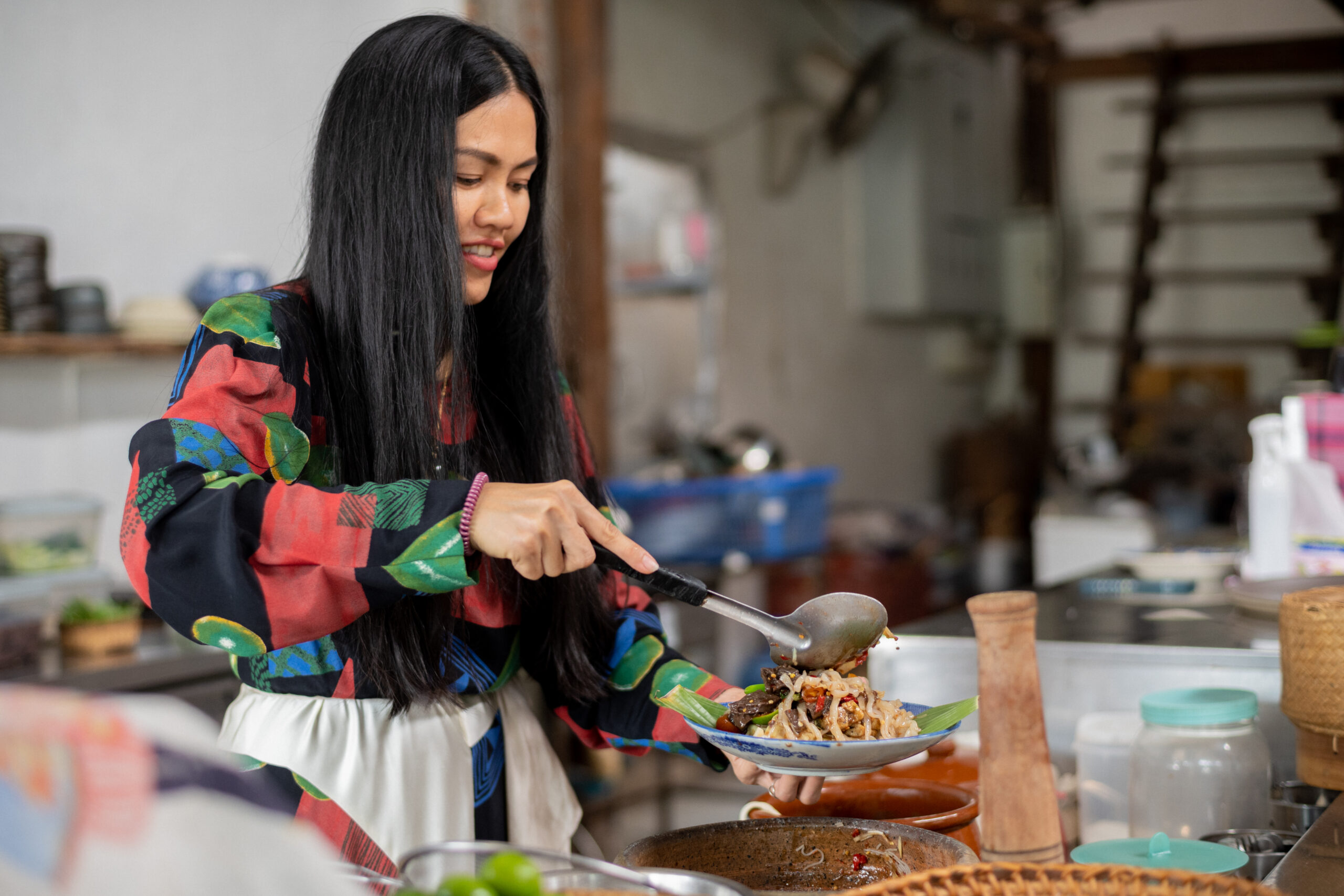
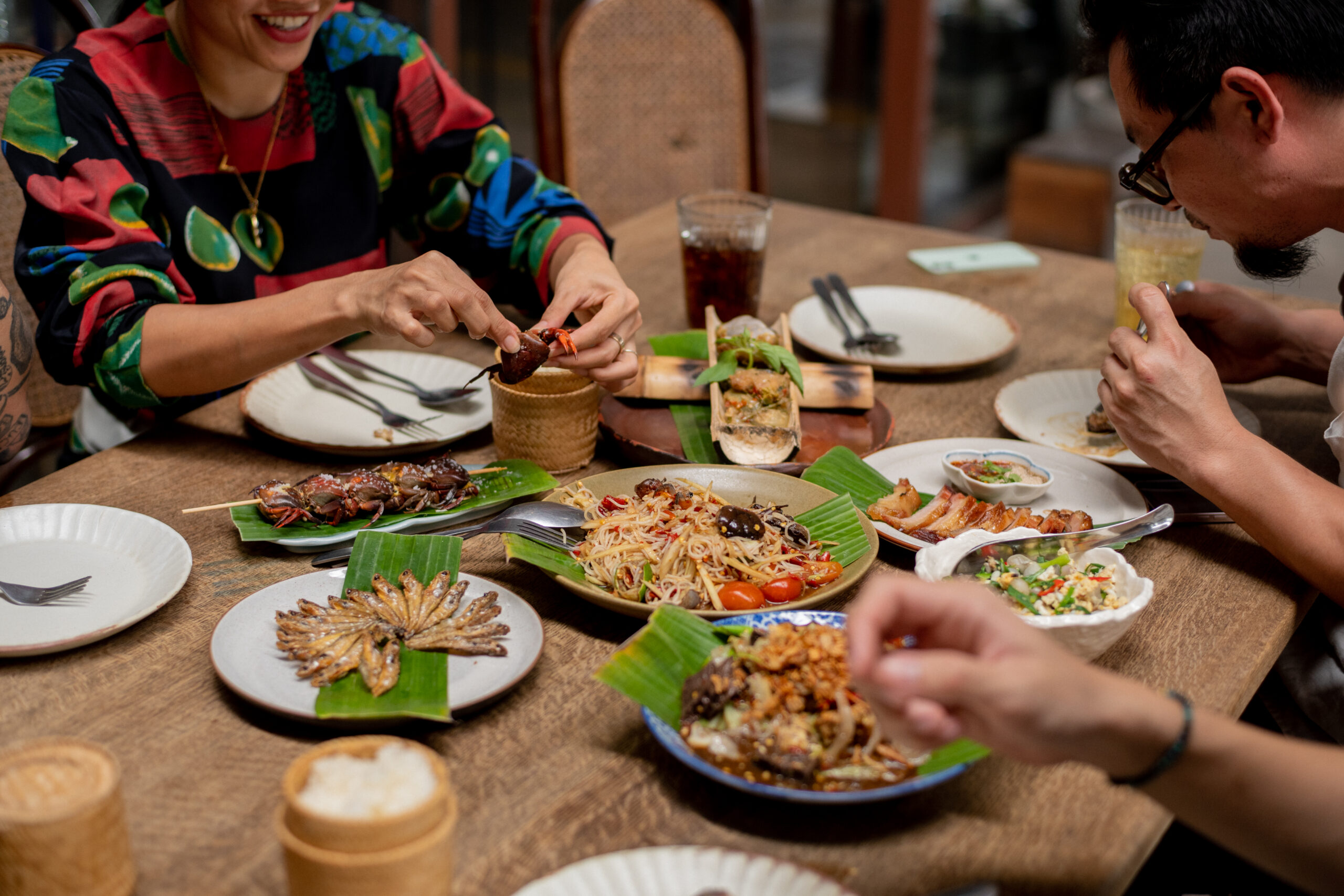
RS:
Give us a little bit of background on Isaan. Just in the last five years, I think people in the US are starting to become familiar with this cuisine. There’s some restaurants there that are very som tum (papaya salad) and laarb focused. But I was really surprised the first time I came to your restaurant because the food was so different from the Isaan food I’ve eaten my whole life.
EP:
Isaan is the biggest part of Thailand, in the Northeast. Isaan people are everywhere [in] Thailand. Our food is everywhere in Bangkok, every soi (alleyway). But when I came to Bangkok to study for my bachelor degree, I found that the Isaan food here was nothing like what I had grown up with in my own town.
RS:
Why do you think it was different?
EP:
The taste— too sweet, [and] a lot of times it was spicier than anything I ever had growing up. At my home, we only ate spice when dipping sticky rice in ‘jaew’ (a chili paste/Isaan style dipping salsa). But really the taste I was used to back home was much more complex, not too spicy, the flavor and aroma came from the herbs.
RS:
You were saying before that you can go anywhere in Thailand and find Isaan people. Many people have to leave Isaan and come to the bigger cities or to the south, because there’s not many opportunities for work in the region.
EP:
Yeah, the Isaan people are farmers. So if we need to make more money, we have no choice but to leave our homes and move to the big city.
RS:
While it’s nice that Isaan culture has spread so much, it’s a bit sad because one of the reasons why people have to leave is because the central Thai elites, who control public policy, have traditionally not invested in Isaan as well as they could have.
EP:
Yes, for me, I think it’s about politics.
RS:
Because ethnically, Isaan people are more related to Lao people. Thai and Lao people are like brother and sister, the language is almost the same.
EP:
Exactly. For me, I identify more with being from Laos, but after the borders were drawn along the Mekong river, it split Lao people up between two countries, which doesn’t really make sense [culturally].

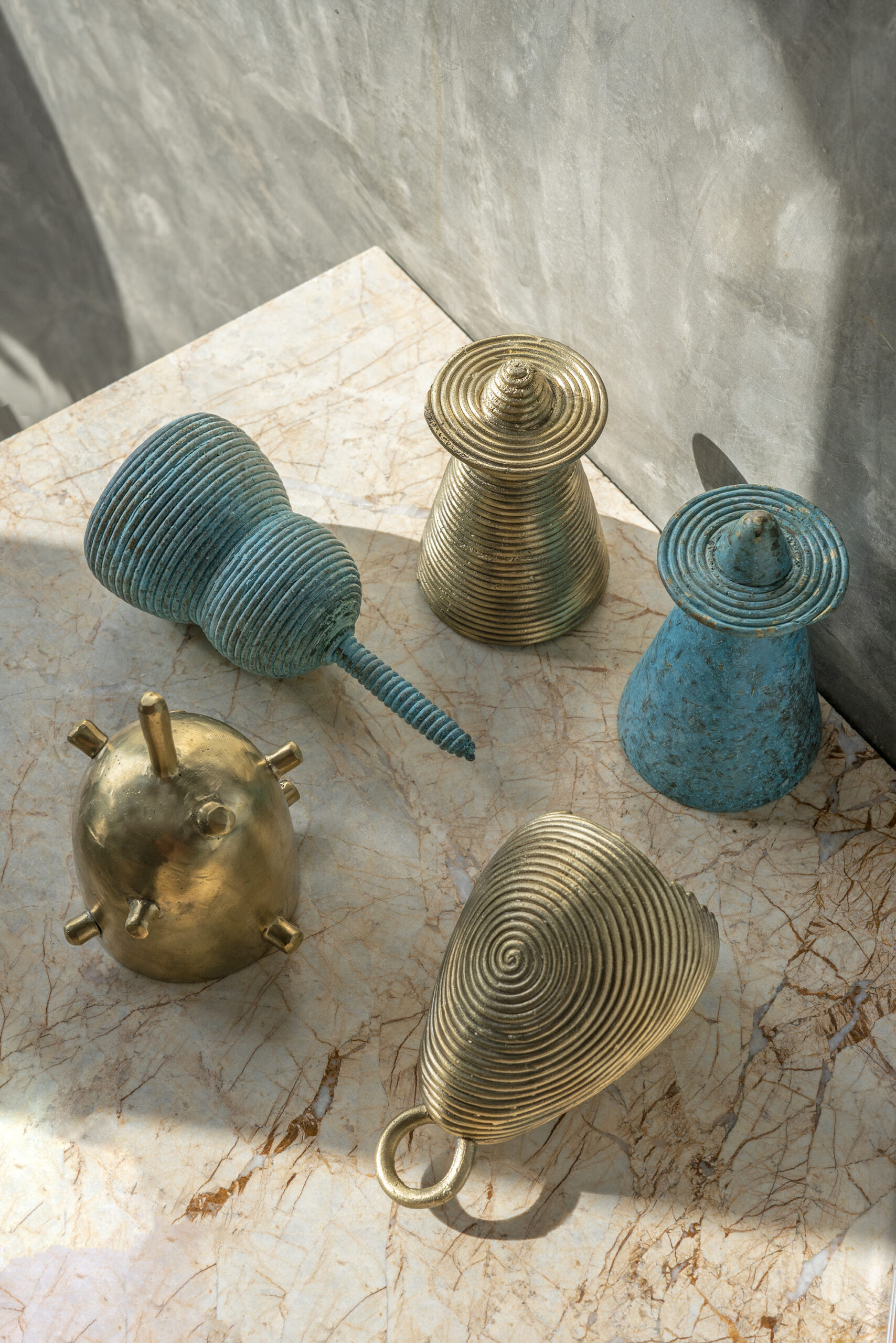
RS:
There’s a lot of history behind that. My work in Ban Pa Ao village is working with a community of people who’ve been practicing an ancient brass casting technique for over six generations. Originally their ancestors came from Vientiane, the capital of Laos about 200 years ago. So Loong Boonmee, the master craftsman who I work with, he can trace back 6 generations to his great, great, great grandfather who practiced this same casting technique.
I was so drawn to this local craft knowledge precisely because it hasn’t changed at all. They don’t use any modern technologies, everything is done with local materials. And I found, after being a designer in New York for like, 10 years, that it was so refreshing to learn from these people who’ve perfect the same techniques for generations. They’re truly masters at it. It’s almost like it’s in their body. They don’t write anything down. Everything is just passed on, verbally and through their hands. I feel really privileged to be able to learn from them.
Oh do you want to join us, Nief? (Eve’s partner Nief joins the conversation).
Ellar ‘Nief’ Hanief:
Sure!
RS:
You work with Eve at Zao, tell us a little bit about yourself.
EH:
I’m someone who has always questioned about food and beverage, everything in my life that goes on, is about food.
RS:
I think your background is so interesting, because you grew up in Chiangmai but your family is from Northern China, and you cook every cuisine! But before Zao you had never cooked Isaan food, so you’ve been learning and I think that’s a big part of the story of Zao—passing on the recipes and creating a new community. That’s one of the ways you guys are helping to preserve these dishes into the future.
EP:
My background is in fashion design. So when I started out, I wanted to keep the recipes very authentic, but also wanted to make the dish visually interesting [with my own spin on it]. The idea was to try and add a different value to Isaan food, and that if the idea worked it would be a good chance to let people look at us as an Isaan culture in a different way. We’re not dirty, we’re not cheap. For me, I don’t think Isaan is poor.
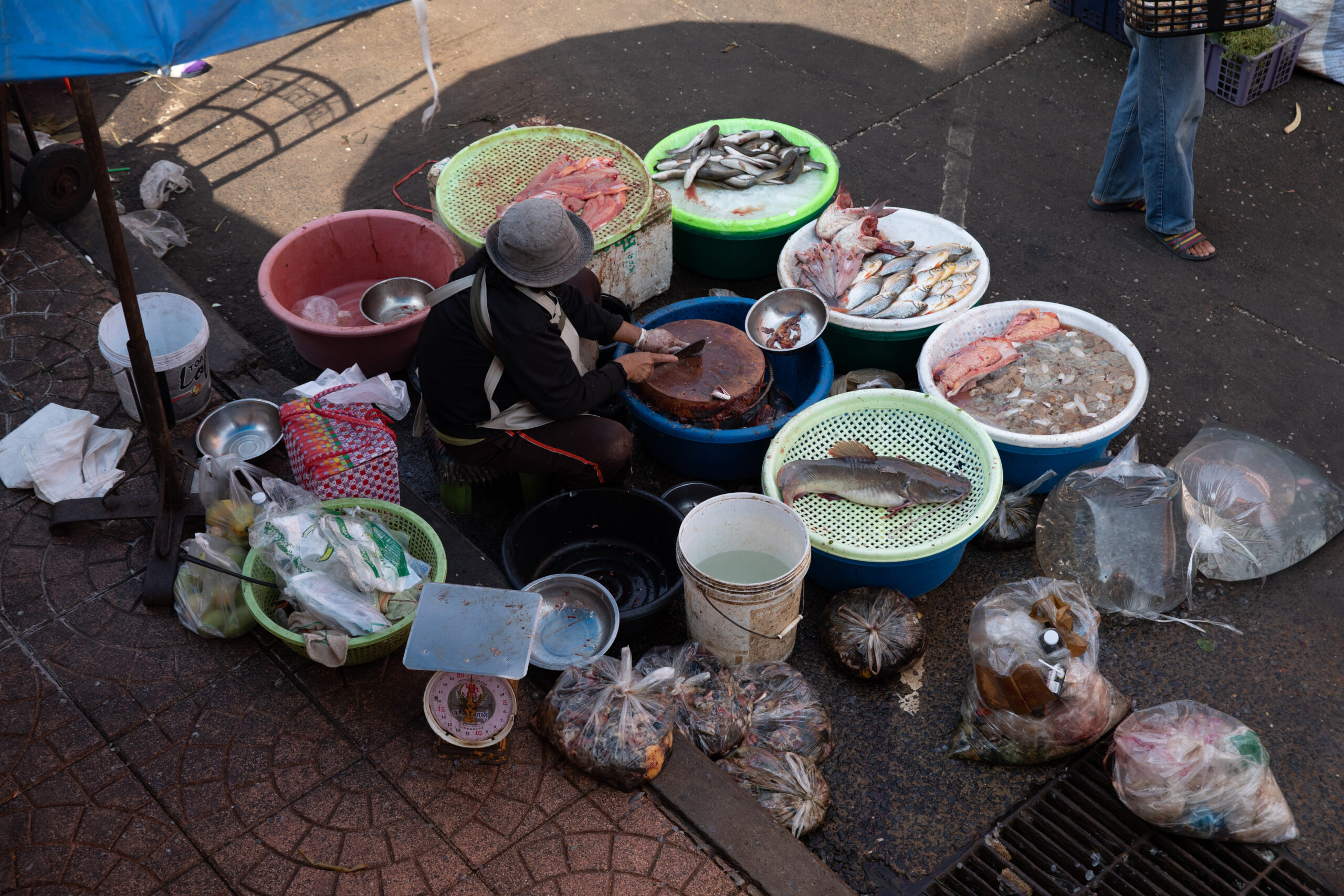
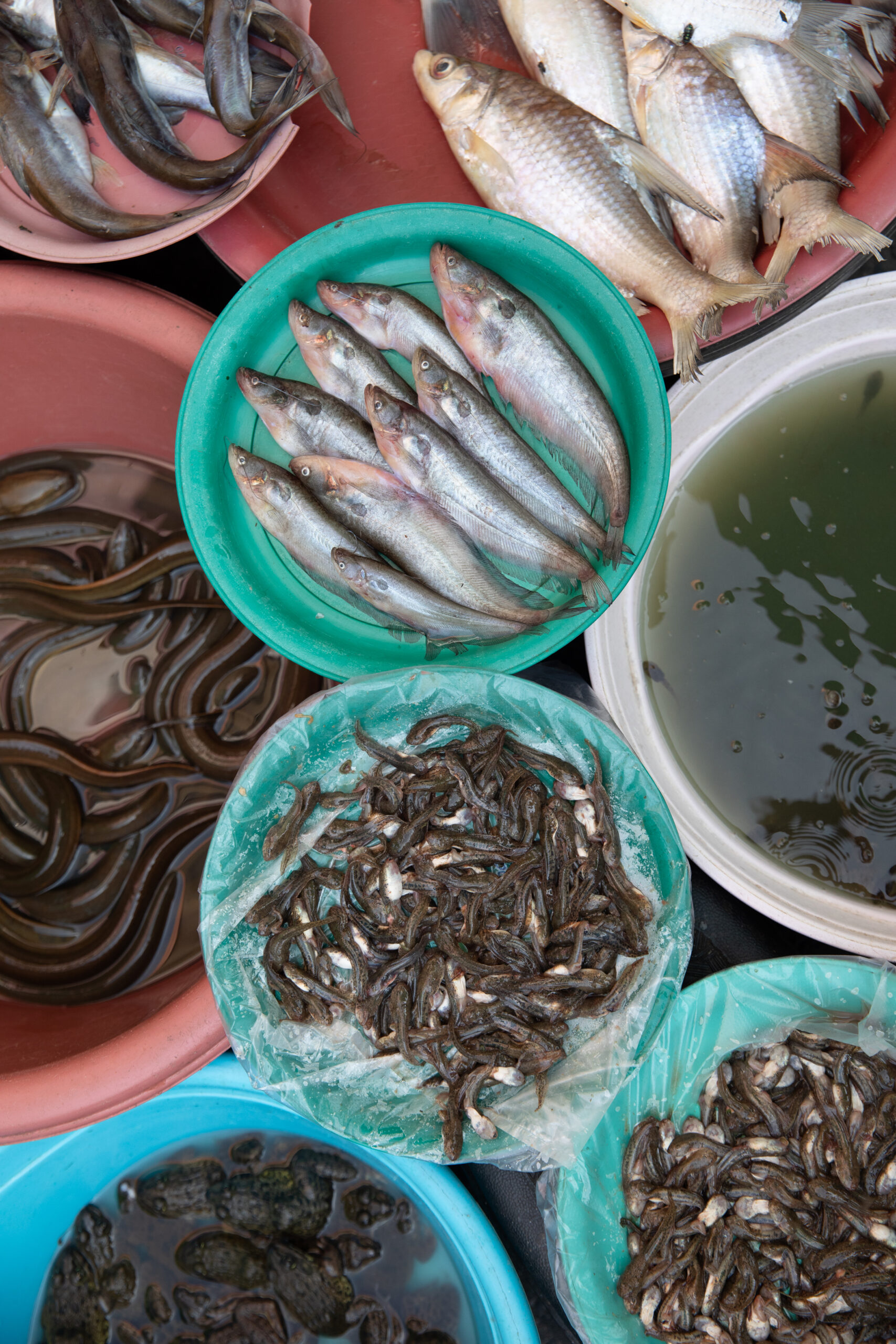
RS:
Right, that’s the sort of stereotype. I remember the first story you told me about trying to rent a space for Zao in Bangkok, and the owner’s reaction to your idea.
EP:
Yeah I told them I wanted to open a restaurant with Isaan cuisine. And they said, ‘Oh it’s going to be dirty and smelly. No, no, no.’ They weren’t going to let us do it. I was so angry about it!
RS:
So it’s a challenge to change these ideas on what people think about Isaan.
EP:
Yeah, at first, people say, ‘Your Isaan food is so expensive!’ But they don’t understand, I have to go to the market every day.
RS:
Tell us about this market.
EP:
My favorite market I go to is called Warin Chamrap fresh market in Ubon Ratchathani. At these markets there are women who sell veggies, meat, basically everything from neighboring provinces like Yasothon and Sisaket.
RS:
So the farmers take the bus?
EP:
Yeah, every day at 3 AM. And we go at 5 [or] 6 AM. By the time it gets to 8 AM there’s nothing left.
EH:
They grow things but they also sell what they’ve found in the wild.
EP:
Yes, so these women, they aren’t the farmers. The farmers don’t want to go to the city, so they say “take my veggies and go sell them at the market”. So they work as a team.
RS:
Interesting, so it’s kind of like a local economy that they’ve created. A system where for these women their job is almost as an agent, to gather these things and then come to the market.
EP:
That’s sort of why the taste is also different. The shallots (hom daeng) we use are from Sisaket. The taste is very strong, pungent, more so than Ubon or other cities.
So we choose the best. If we make laarb, the shallots have to be from Sisaket, also the garlic. We also have to use only Ubon fish in our dishes.
EH:
It’s from the Mekong river, where the water flows fresh. That’s why the taste from the meat is so fresh, not too stinky like from the mud.
RS:
Why does it taste different?
EH:
It’s the location and the ‘naam lai’ (the freshwater current).
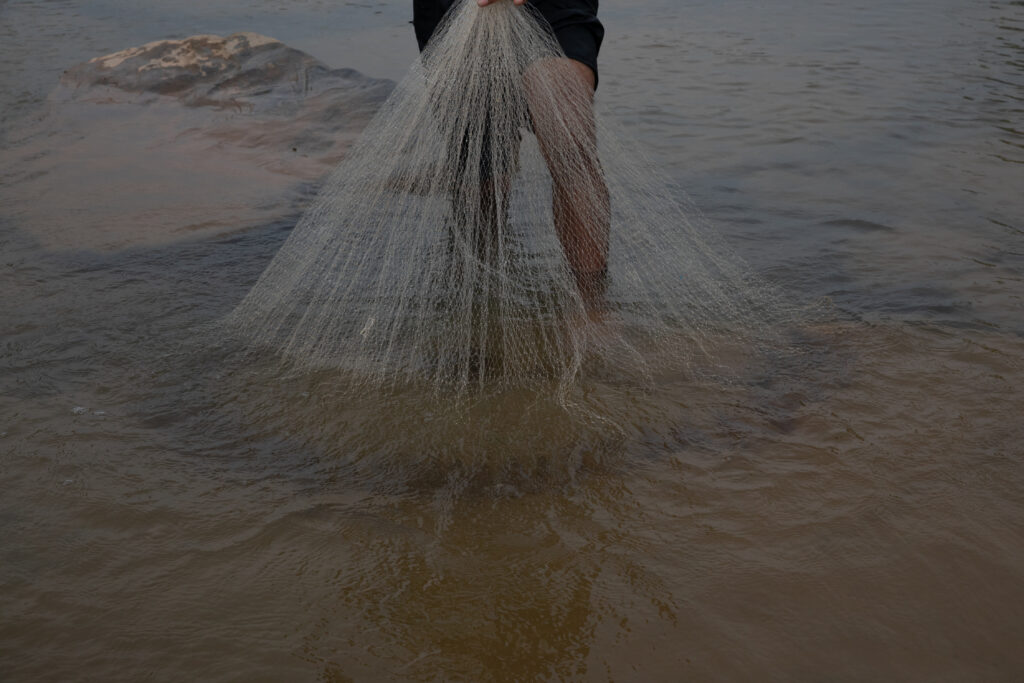
RS:
I love that idea of the specifics of a place, because I think as food culture travels around the world, it’s great that we’re sharing new cuisines or new crafts with people in different parts of the world. But you are losing something if you’re using the ingredients from a new place to make very regional local cuisine. You know, Ban Pa Ao is very similar. The thing that makes the Ban Pa Ao process so special is that almost every single material comes from within five kilometers of the village.
They have a secret place where they get the termite clay that they use for the molds. And this clay has to be perfect. If it’s not the right composition, it will shrink too much during the firing, and the mold will break. Over the past 200 years, they’ve perfected this technique of mixing the clay with dung from cows that they also raise in the village. The cow dung is what preserves detail in the casting. They mix beeswax with a local tree resin to create the perfect consistency of the wax. Everything is informed by the materials and traditions of the village, even the annual rice harvest—they keep the rice husk and use it in multiple steps during the casting.
[Interruption from a street vendor selling brooms]
EH:
That’s Isaan style there, you’ve got a broom.
RS:
Yeah, when you travel around Thailand and you meet other Isaan people is the connection instant?
EH:
Yes, it’s instinctual. You feel like you’re home everywhere.
RS:
Eve, when you first started to go to Warin Chamrap market, you would wear these really flamboyant outfits. [At the time] I was wondering what the vendors might think of you, but the thing I’ve noticed about Isaan people is that they’re much more loud and fun than other types of Thai people, whether it’s the music, or drinking a lot, or the way that they eat.
EH:
Wherever the music is, you can see everyone go there. They’ll even prepare to have a shot with you in the early morning… Some aunties come to the market to sell their goods. And then after that, man, just drink. Party time, money gone.
EP:
Then they’ll go back to the fields, gather some things to eat. Get their money. Drink again, like a cycle. Just enjoy life.
RS:
Right, people in Isaan are not working to work. They’re working to be able to live their life the way they want to. I remember talking with Loong Boonme about how much he hates traveling to Bangkok. He always tells me, “I can’t wait to go back home”. He misses the food and being at his workshop.
EP:
My dad has never been to Zao since we opened. He says “no, no Bangkok. ‘Hai jai mai auk’”. (I can’t breathe there). [He’s] like why do I have to go? I should stay home, eat my food, I’m comfortable here. Isaan people they feel like, the food, the taste, the palate, you can only have it here.
RS:
Isaan people need their food.
EP:
You can see from social media, there are ‘mia farang’ (colloquialism for a Thai woman who has married a Western man, also used to describe Thai who live abroad) who started Facebook pages, about how to live overseas in Switzerland or in Norway [as Isaan], and how to source ingredients. They even have [recommendations] on how to go to the forests over there to get mushrooms, to make their soups.
RS:
So they’re bringing their culture with them, even if they go abroad?
EP:
Right, so [Isaan expats] will change the ingredients but try to cook the same way, try their best to keep the same taste. That’s why I had that pop-up event with Appia, a Roman-style Italian restaurant in Bangkok. The idea actually came from ‘mia farang’ food. Chef Paolo invited me to do an ‘Isaan meets Rome’ pop-up meal. So I was imagining what I would make [as an Isaan person] in Rome? How would I make Isaan food with Roman ingredients?
RS:
So what were some of the dishes you made?
EH:
We used porchetta to make ‘laarb moo krob’ (crispy pork herbal salad). We roasted and ground arborio rice to make our own ‘khao kua’. And then we made som tum using fresh pasta. It was good!
RS:
I like this question of how do we evolve the traditional craft, the traditional recipes into something new, because I think it’s going to help preserve these traditions into the future. Like you’re telling me that Isaan people have been doing this already. Even if we don’t notice it, if someone goes abroad, or moves to Bangkok, they find a way to keep eating the flavors that connect them to home. And you’re doing something similar with Zao. [So], how is the food here different from what your nanny used to make when you were young?
EP:
My nanny’s recipes are mostly the ‘jaew’ (Isaan style salsa/dipping sauce), using ‘pa raa’, fermented fish paste. [In Isaan cuisine] we couldn’t live without it. But many Bangkok people don’t like it.
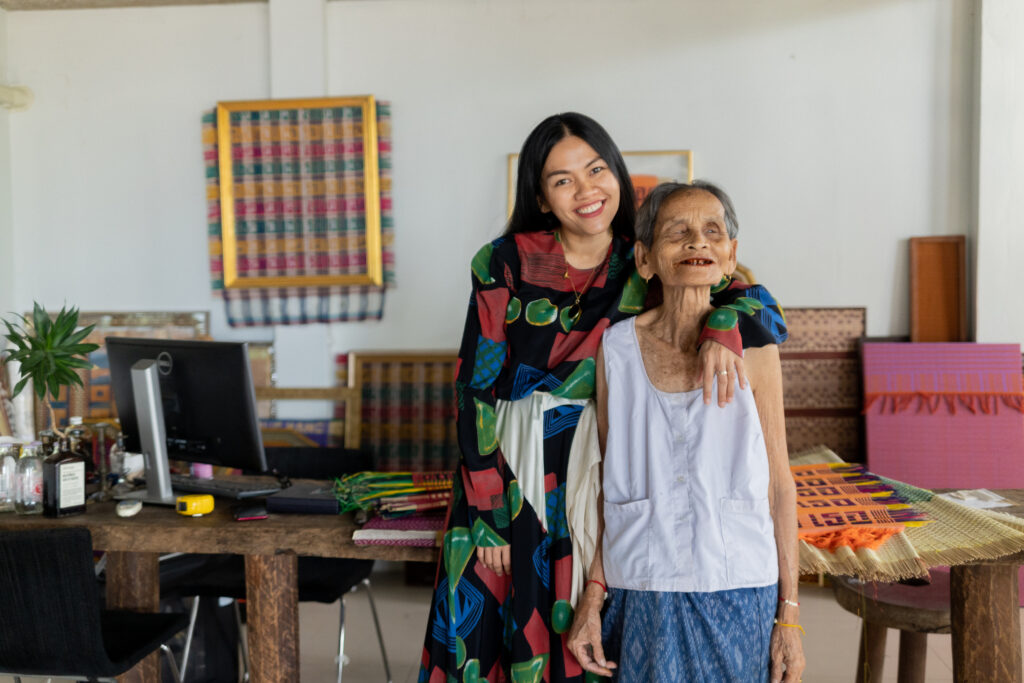
RS:
Have you had any challenges with bringing this food to Bangkok?
EP:
Yeah. For me, I think ‘pa raa’ in Bangkok is so stinky, isn’t it? It’s nothing like the ‘pa raa’ in my hometown. So the way I talk to them is like, “Open your heart and taste in your mouth and tell me if you like it or not. Don’t have an idea before of, ‘I don’t eat ‘pa raa.’ So in the end, most people try it and love it and they say, ‘I can eat ‘pa raa’ only at Zao.’
EH:
You can describe ‘pa raa’ as similar to cheese. It’s all about aging and timing. The ones that people are used to eating in Bangkok are not aged properly. The one that we use from Eve’s hometown has been aged for 2 years.
EP:
It’s all about the ingredients. If you have good ingredients, your food is going to be good, and that’s why Zao is so different.
We try to preserve the rules [of traditional recipes], but we also want to evolve. At the same time, the taste from the ingredients has to be authentic.
RS:
That is something I think about a lot with my own work: How do we evolve? But also keep that signature of what makes Ban Pa Ao special. If you evolve too quickly, you could lose the roots.
So with my work, we’ve been making more modern designs lately particularly with our lighting. But I always try and keep some element that is a Ban Pa Ao ‘signature’, like the coiled lines from the wax, or the rice husk blue patina which was taught to me there. I find this is a fun way to work because you get to tell the story of this ancient craft, not disguise it but just sort of put a new lens or a new shell around it. It can draw people into learning about this craft and community that they would not know anything about otherwise.
I do my best to tell that story, but when it comes to the work there’s no substitute for just being there, in the village. Now that you’re based in Bangkok, do you still go back to Ubon often?
EP:
Of course, I have to go meet and greet my women in the market and check everything out.
RS:
It’s like you have to go back to touch the work and be face to face. Not just to create the right product, but to show respect for the relationships we’ve developed.
EP:
Right, the respect. If I don’t go and have that face to face interaction, the women won’t be able or want to find the specific ingredients I’m asking for.
People might think that if you have money, you can buy anything. But not at this market. You need the relationship.
EH:
You [have to] live with them! That’s the only way, you have to get the heart.
RS:
Loong Boonmee always tells me this. People visit [Ban Pa Ao] every day. They want to come here and learn, but they never come back. But if you keep coming back, that’s the number one most important thing.
EH:
It’s like you’re already a part of that family. If a random person comes and asks you to do something, you might not want to. But if your nephew or aunt or cousin, someone close to you comes to your house, you’ll prepare everything for them immediately!
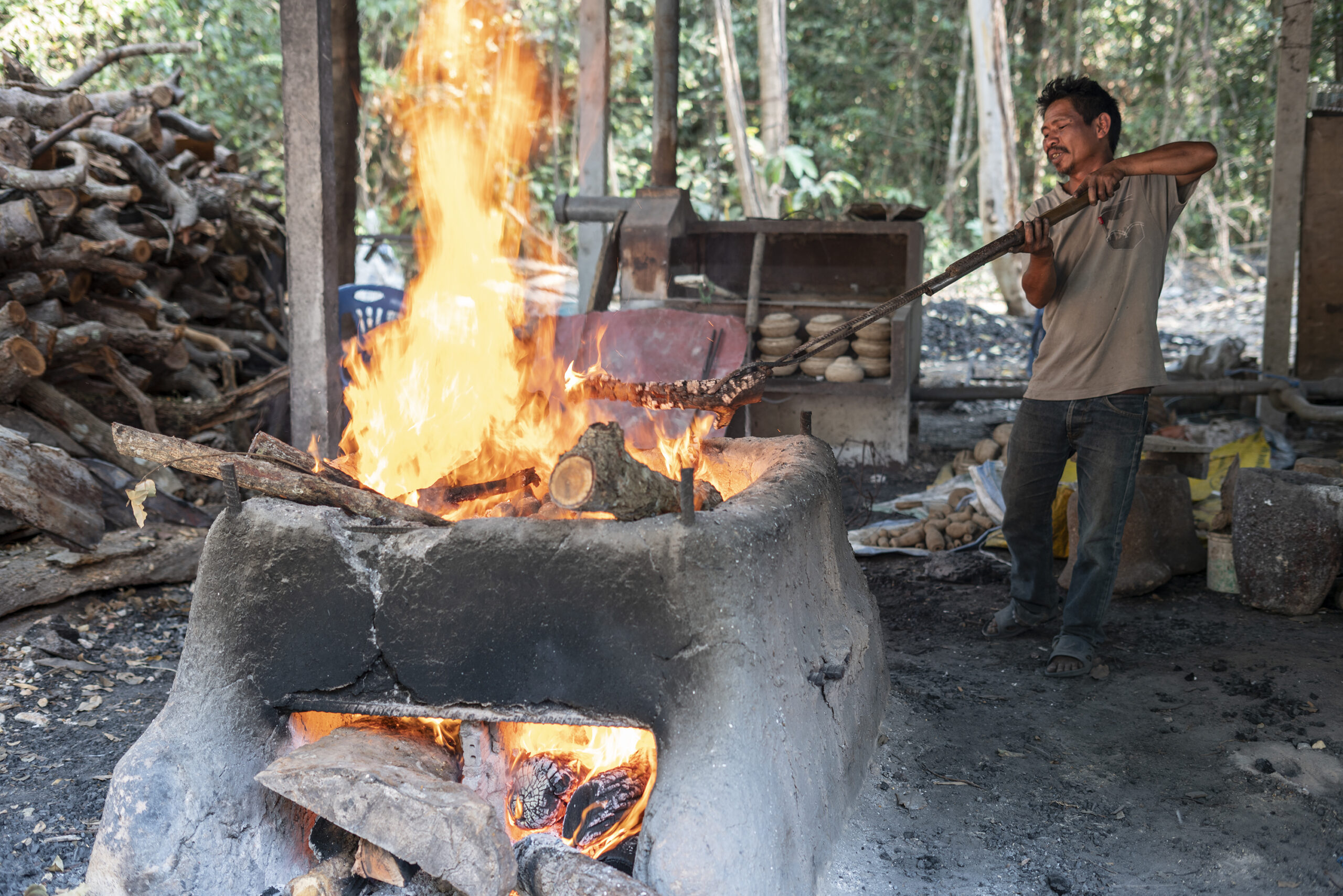
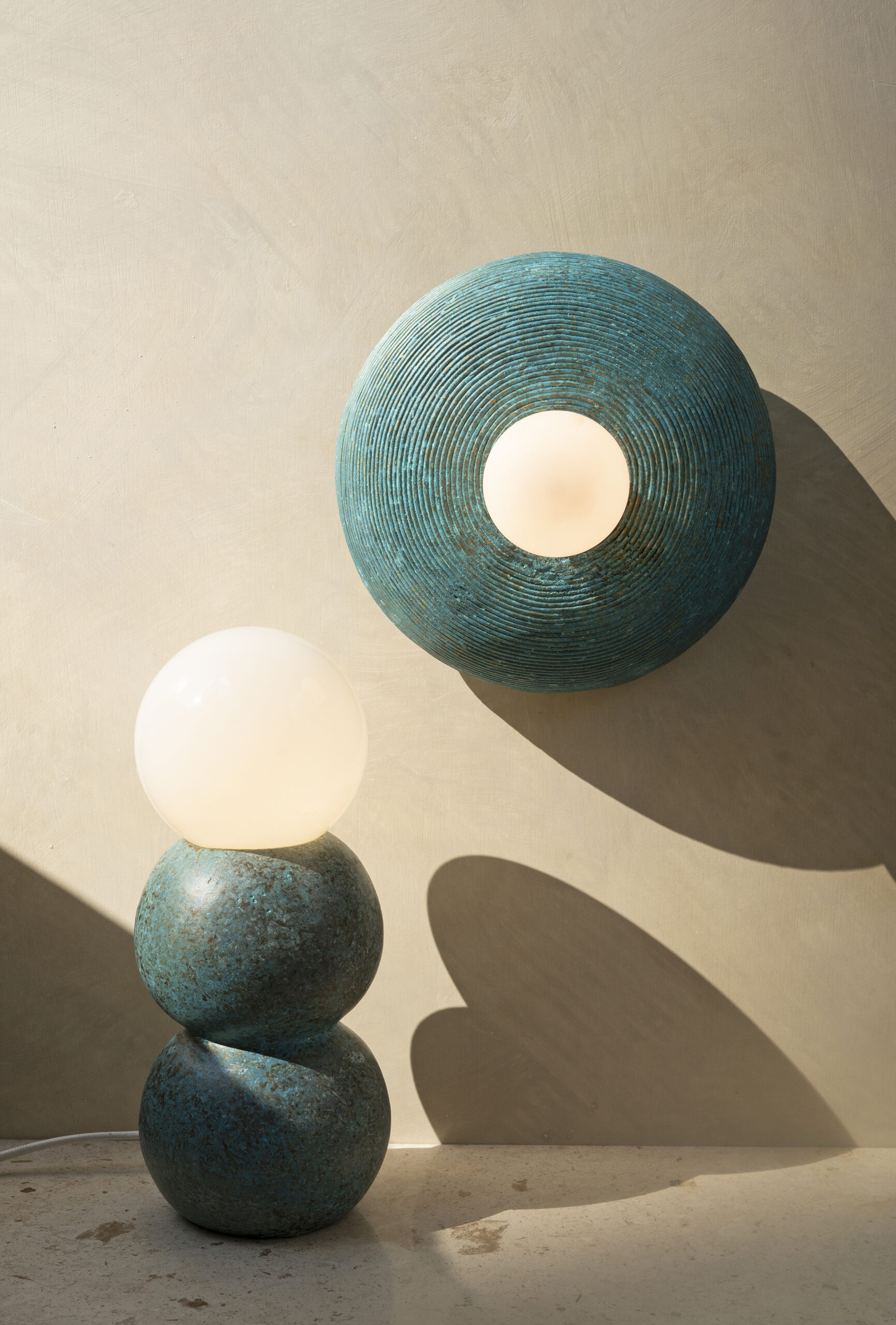
RS:
That was my first impression of Ban Pa Ao. For the first trip I invited my friend Pat Kim, who is a designer and craftsperson from NYC, to come and learn with me, and we spent four days in the village.
And people always ask me, “Hey, I want to do something similar to this, how can I do this?” I always say, you cannot approach this type of community thinking about the product or about making money. You have to approach only with curiosity and respect. So the first time I went, I didn’t talk to Loong Boonmee at all about making anything in collaboration with us. I just said, we want to learn your process, experience your way of life.
So that’s all we focused on, absorbing as much of the craft knowledge as we possibly could in a short period of time, and it was a beautiful connection. Pat is a master woodturner, and a key step in the BPA process is turning the clay molds on a lathe, so Pat was doing that with them. After one or two days, they started calling him ‘Ajarn Pat’, which means master or teacher in Thai. It was amazing, Pat was able to form this deep connection with the community, but they could not speak to each other at all. They were only communicating through their hands, material, technique, and eating together.
EH:
That’s a word that shows deep respect in Thai.
RS:
Growing up in America, I feel like this is what I missed, this deep connection to community. So for me, it feels special to build this new community, that crosses barriers, geography, or culture. I think that’s one way we can move forward into the next generation, by producing these connections. In a lot of ways, I think that’s what you’re doing with Zao, creating a new community around this cuisine and recipes.
EP:
For me I feel the same way, it’s like the market is my family. I’d been going there almost everyday for like 3 years, until I opened Zao in Bangkok. But still when I go back now, I ask what do you have today? Anything special? For example winter just started, so there will be new herbs. Rice field crabs. December, New Year’s, this is like the best time for crabs.
RS:
That reminds me, you remember when I had the ‘tom yum uang’…
EP:
Yeah, the ‘tom yum uang aang’! (all laugh)
RS:
What is ‘uang aang’ exactly?
EH:
It’s like a frog, but really puffy and slimy.
EP:
It looks really gross [laughs].
RS:
I remember even when you saw my Instagram story, you’re like, I can’t believe he’s eating that!
But they explained to me they only eat this once a year, during the beginning of the monsoon season, because on the first rain, these frogs start coming out of the rice paddies. And they only eat it this one time because the meat is still tender and soft. So it’s this once a year tradition. It wasn’t my favorite thing ever, but it felt really special to participate in this tradition.
Food culture can tell the story of a place, it can tell you what people were doing 100 or 200 years ago. It connects us to the past. And it’s the same with craft, I can sit down in Ban Pa Ao and start working with this wax, and know that Loong Boonmee’s great grandfather was doing almost this exact thing in this exact place generations ago. It connects us in a way that is so special, to understand how people were living their lives.
I’m curious, as an Isaan person what did you first think about this work I was doing in Ban Pa Ao when we first met?
EP:
At first I didn’t think that you’re going to keep coming back, because for 10 years I’ve been taking people there, and people just come and go. Even for me, I found it hard to make products there because the price of brass casting is quite high for local people. Before Zao, I had another project called ‘FoundIsan’, where we worked with local people doing all types of crafts. That’s why I have this connection with so many craftspeople. But the problem is in Thailand, it’s so difficult to sell [these crafts], because no one wants to pay the price. For example these chairs we’re sitting on, if they weren’t designed by [our mutual friend] Saran, no one would buy them.
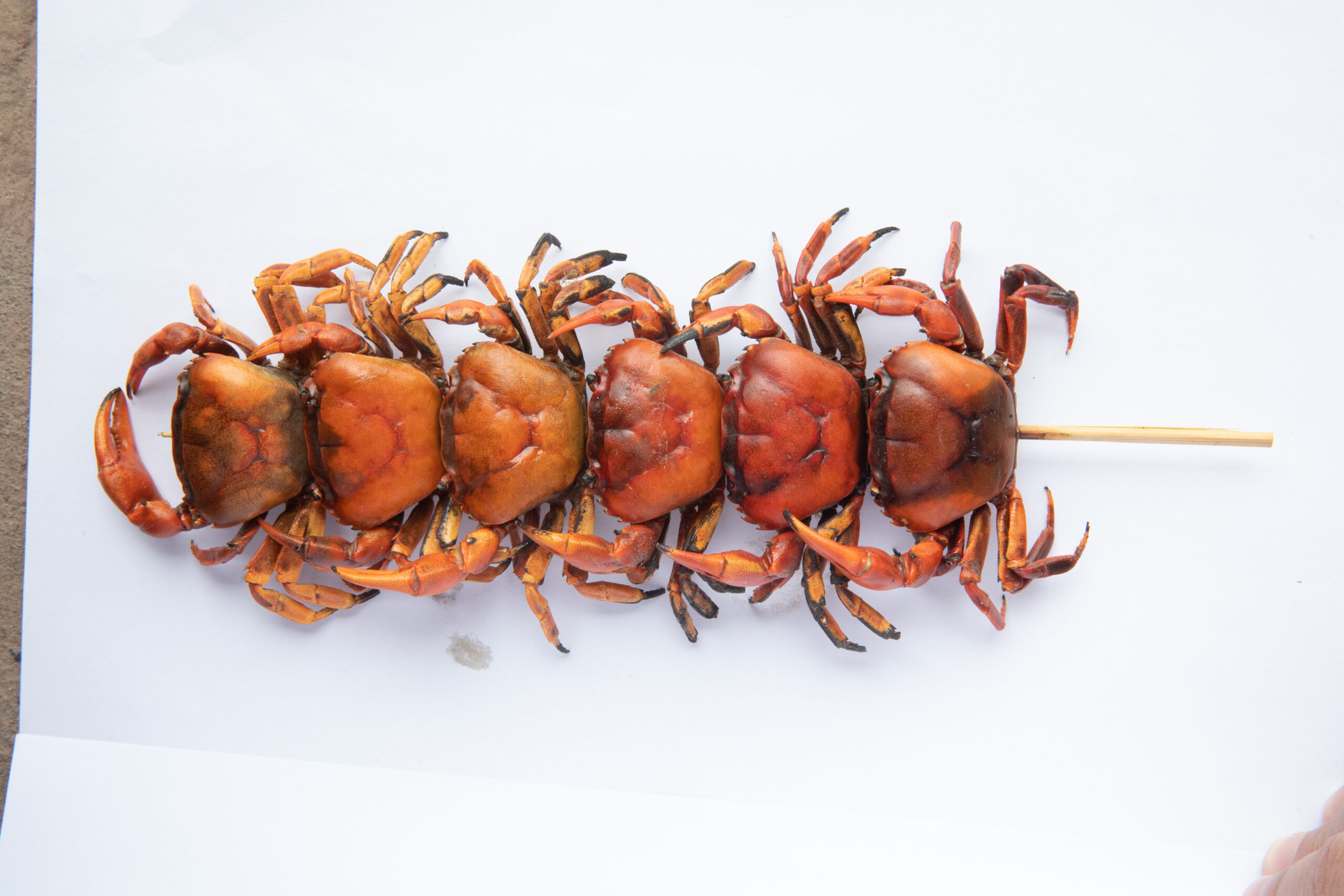
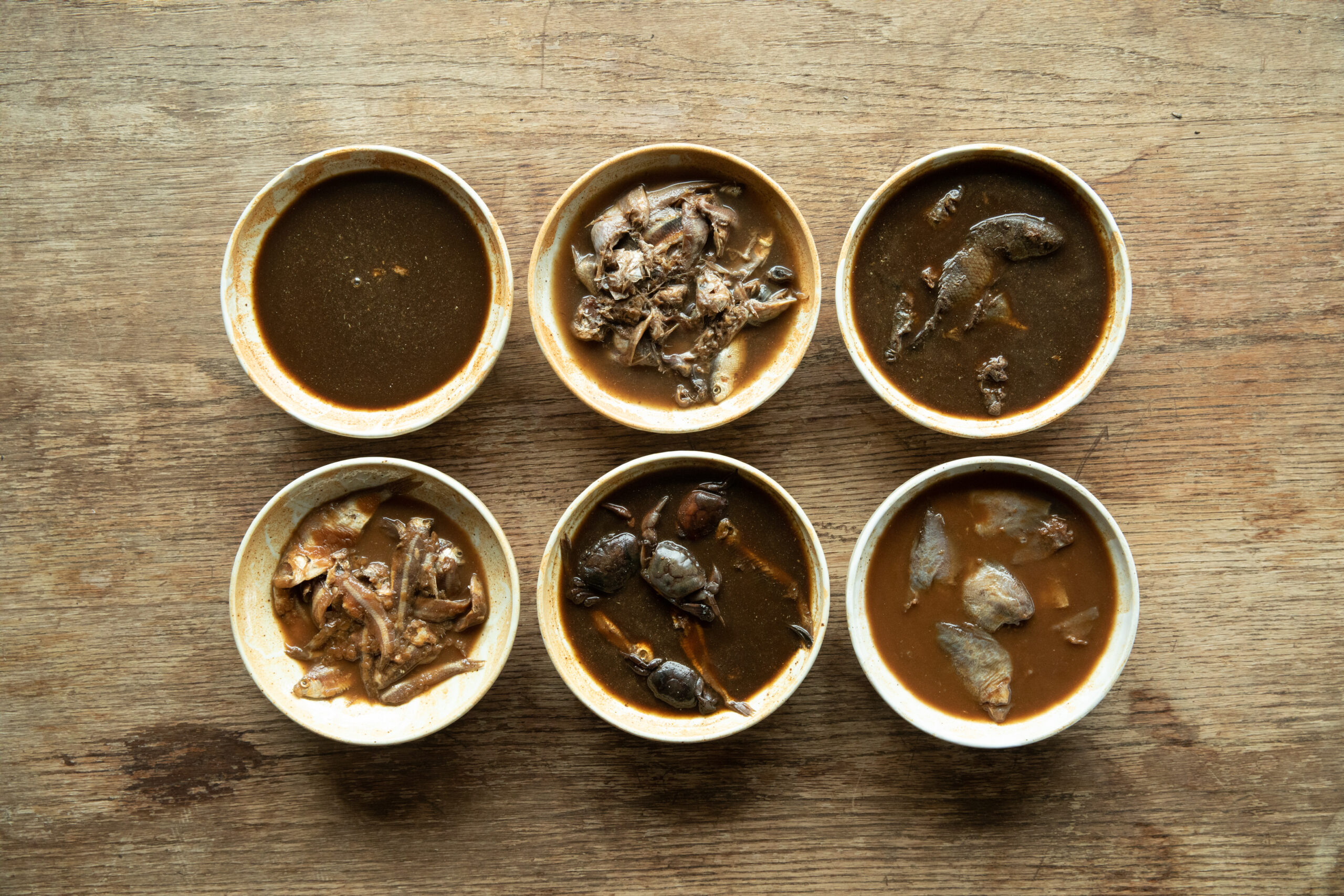
RS:
That’s interesting, because in many ways it would be harder to do what I’m doing if I was a true local. Because I can approach Ban Pa Ao in a way that’s a little bit more detached from the local economy. We have a mutual friend who tried making a product there before but had a really bad experience, because he thought they were charging too much and he didn’t like the quality. But for me, I’m kind of embracing the imperfection, because I think it’s part of the story, and I can communicate that to my clients. And that’s actually what makes the work special.
But the other thing I have noticed in Thailand is that a lot of people don’t really appreciate the local crafts, and the idea that you could make something in Isaan that’s expensive is crazy to them. Especially people in Bangkok, the elites here, they have so much money to spend. But if they’re going to buy Hermes or Louis Vuitton, some brand from Europe, and of course that’s worth the money. So one of my goals is not to just bring the work back to the US, but also help people in Thailand have a different appreciation for it. So I’ve been happy that we’ve sort of organically started selling our products here lately.
EP:
That’s because you’re handsome and you speak English [laughs]. And you used to live in New York. Really! I’m telling you, it’s New York.
RS:
No, I mean that’s true, and this to me is a problem but a solution at the same time, so I am a bit uncomfortable with this. I noticed that when my work from Thailand gets some press overseas, in the New York Times or a magazine in the US, then the Thai people want to buy it. Because it was in New York. So that is a weird thing for me.
But for you too, what do you think about how a lot of your customers here are gonna be like rich Bangkok people, you know it’s like you had no choice but to come to Bangkok to change people’s perspective about Isaan food and culture?
EP:
I opened Zao first in Ubon, but local people didn’t really come because they’re already eating local food and cooking at home. So most of my customers were people who visited from Bangkok. Saran was the one who said to me, ‘I know your goal, I know your mission. You want to change the perspective about Isaan culture. So you have to come to Bangkok.” To say, loudly, to shout, this is us! This is Zao.
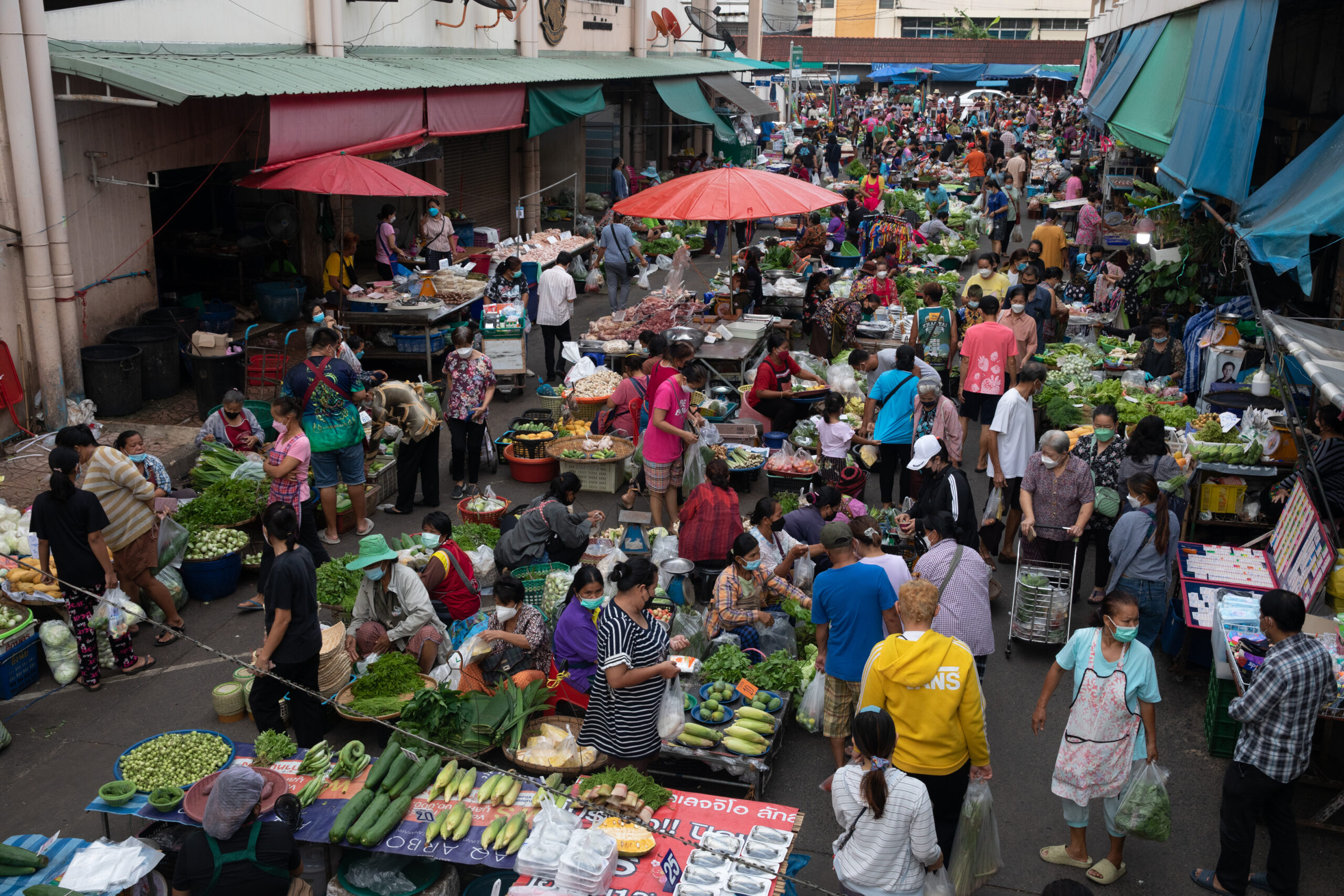
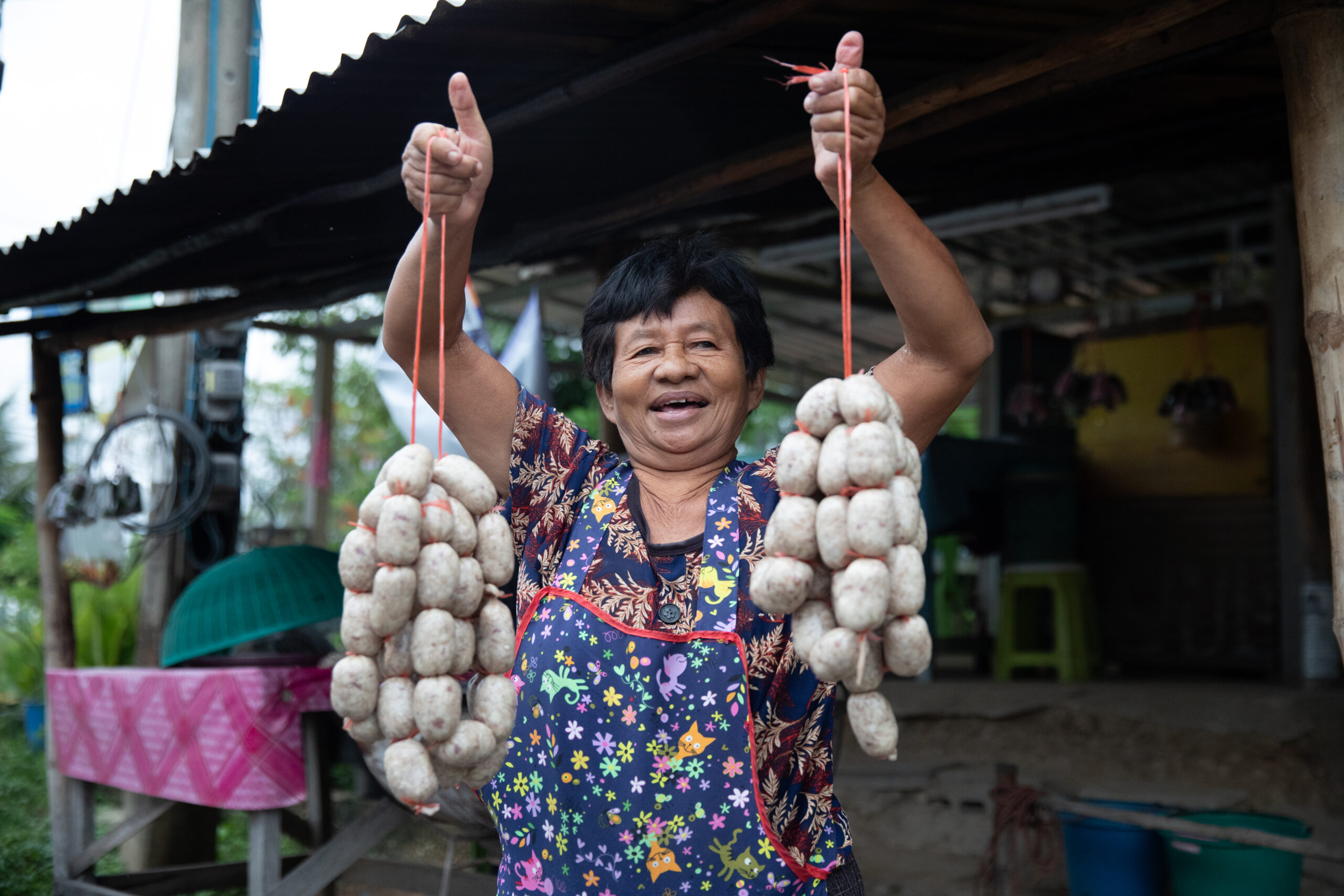
RS:
But you’re doing it in a way that is specific to you, you’re not coming here and changing who you are or what the food is except for ways that feel authentic to you.
EH:
We’re expanding the house, expanding the home, the Isaan home.
RS:
What do you mean by that?
EH:
Why do we employ mostly Isaan people in the restaurant? Because they are rich inside , because they know these dishes that we sell, and in the kitchen they speak our language, Lao.
RS:
It’s almost a new community for them to feel at home as well, here in Bangkok.
EH:
The important thing for them is family, the people who you live with.
RS:
I think from talking to you about this, the main thing that I’m really taking away is that you have an ecosystem of people who are connected, and you need each person to be proud of and care about the work and the ingredients. If you remove one person, it kind of all falls apart. It’s kind of delicate, but what you’ve created is so strong now.
EH:
These good relationships really take time.
EP:
It’s all about trust. Not everyone can do it.
[interruption from a fruit vendor. Eve starts speaking Isaan dialect and orders watermelon and mango]
If I [had] set the goal of money first, I don’t think I ever would have developed relationships in this way.
RS:
The money can come eventually, but for me sometimes I look for excuses just to go back to Ban Pa Ao, even if I don’t have products to sell. I look for some reason to go back because I want the community to know that we’re going to continue this relationship no matter what. Whether it’s making products in the future or bringing people to come and learn and do a workshop. It’s like I needthem to understand that they feel like my family now.
EP:
It’s the same for me. Sometimes I have no reason to go to the market, but I want to go to let people know “Hey, I’m here, I’m here!” I’m still doing this. If I ever have a chance to go back, I’ll go. I really want to make Isaan people proud of what we have. I want them to speak Laos. Nobody taught us when we were born to be proud of being Isaan, they said, “Don’t speak Laos when you are in Bangkok”. Don’t show your Laos, don’t show your Isaan way. But I never listened to them, because family for me is so important. We always spoke Laos. My Mom was a teacher, so she taught me how to respect people and respect yourself. But my friends, they weren’t proud. It’s because the government always created the picture of Isaan as being poor, uneducated, only farmers. So if you want to have a good job you have to come to Bangkok, work in the city, leave your house. So that’s why so many villages in Isaan are empty now. It’s all propaganda. They never taught us that it’s good to stay and be proud. It’s sad.
It even affected me when I was young. I always told my Mom, “I don’t want to stay here, I want to go learn overseas. It’s poor here, there are no opportunities.” But when I grew up, I lived in Bangkok, and later opened a business here. I would meet so many Isaan people, and sometimes ask them if they wanted to work with me and it was so easy. For me, it makes me feel privileged to be Isaan! Because all the people I work with, my community, they are all from Isaan!
And really that’s the reason why I’m doing Zao. Because I want to be useful. I want to live a life that is meaningful. If I don’t speak and share about Isaan culture, who else is going to do it for me? There are others doing it at the same time, but I have to do my part, to be proud.
RS:
Yeah, I think you’re a part of a new generation of [Isaan] people who are showing pride in their culture, and as you do that it’s going to push more and more people to follow in your footsteps.
EP:
Right, and I didn’t have those examples when I was young. That’s why I feel like it’s so important for me to work hard, to be successful. If I can be successful here then I could be an example. So I just believe. Trust where you come from. Be proud of it.
When we just did our Open House for the new Zao Larb restaurant, we had like 20 tables of people. And my rule was that each table had to have one Isaan person. They could invite their friends to join them, so they could learn how we eat.
RS:
So they’re basically acting as ambassadors, like translators.
EP:
Right, so I didn’t have to go and explain anything. It was amazing. After 9 PM, everyone started singing Karaoke, Isaan-style folk songs. It was so funny, everyone. You had these “Hi-So” people (Thai slang for ‘high society’), singing these Isaan songs and enjoying themselves. At first it was weird for me! I didn’t think they could ever sing like that (laughs).
RS:
Yeah I really resonate with this idea of being a translator. More and more that’s how I see my work— it’s about being someone in between who’s translating both to my community back in NY, but also to Loong Boonmee in Ban Pa Ao, or to other people in Thailand. Just trying to help connect these different people who might not ever have a chance to meet. And like you said, I feel so privileged to do this. But to be honest, I didn’t always feel this way. When I was younger, I was so confused. Like where do I fit in? I don’t fit in in Thailand where I couldn’t speak Thai and people kind of looked at me like curiosity – not quite ‘farang’ but not quite Thai. And growing up in a nearly 100% white community in America I didn’t completely fit in there either. Now I feel like I’ve found the perfect place to just be really me, which is in the in between. And that makes me so happy…
Alright, we should eat!
EP:
Haha you’re getting hungry right!
[We finish our afternoon together sharing ‘jaew hon’ (Isaan style hot pot), and ‘larb bet’ (spicy duck salad) at Eve’s new restaurant Zao Larb.
